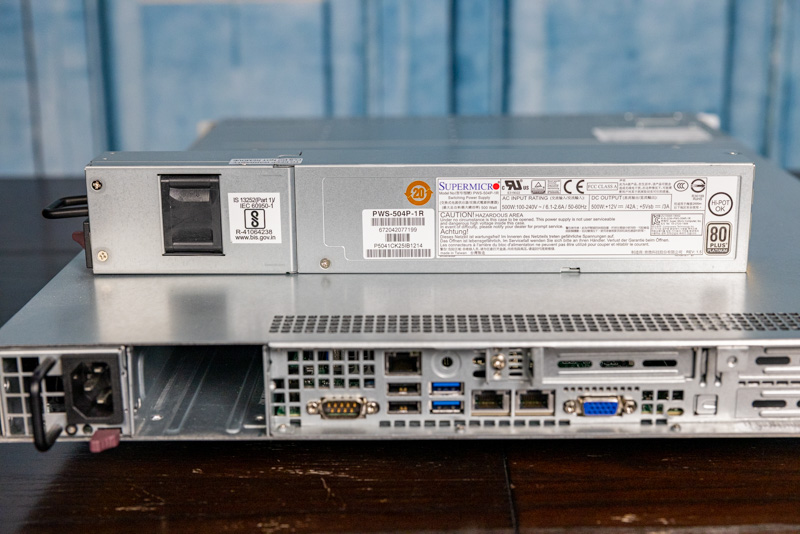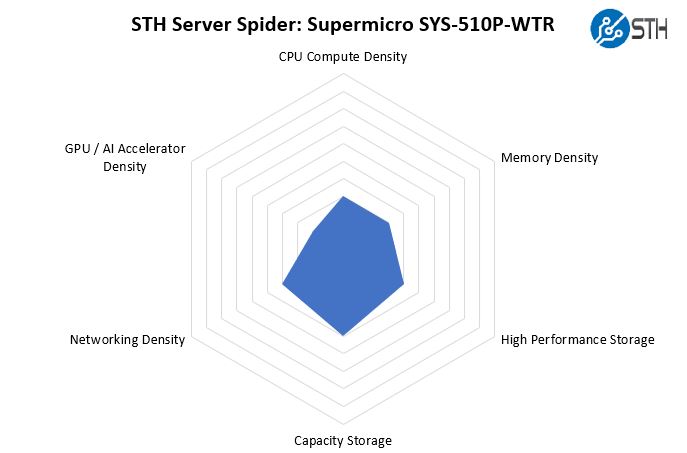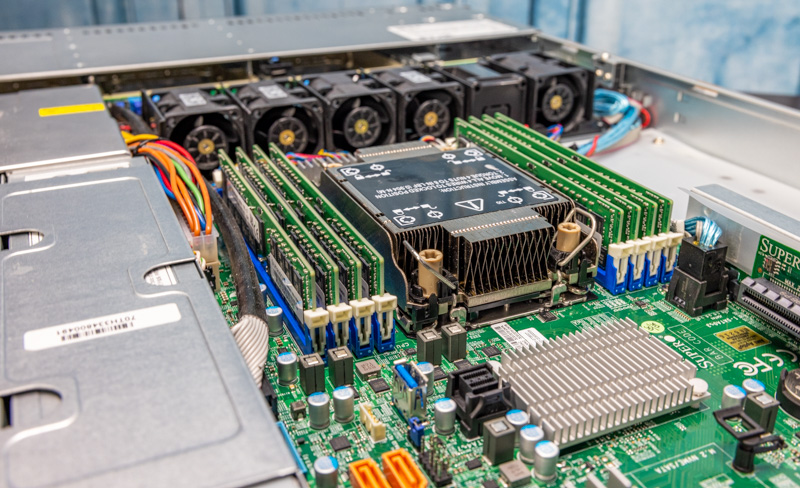Supermicro SYS-510P-WTR Power Consumption
Since we had a relatively full configuration, we wanted to see if the 500W 80Plus Platinum PSUs were sufficient.

- Idle: 0.09kW
- 60% Load (non-AVX): 0.27kW
- 100% Load: 0.32kW
- AVX-512 GROMACS Load: 0.35kW
We tested these in our data center with 70% RH on 208V power. Overall, this was good and left us room for higher-TDP CPUs or potentially more PCIe Gen4 add-in cards/ drives.
STH Server Spider: Supermicro SYS-510P-WTR
In the second half of 2018, we introduced the STH Server Spider as a quick reference to where a server system’s aptitude lies. Our goal is to start giving a quick visual depiction of the types of parameters that a server is targeted at.

As a 1U platform, this is a well-rounded platform. At the same time, it is not the highest density per U. That is somewhat the point of the WIO platforms. One gets solid density at a lower cost and a smaller footprint without moving to the level of engineering that is needed to get to denser configurations. If you are going to have two hard drives and two 2.5″ NVMe SSDs, you do not need the expense of a 10x 2.5″ front NVMe setup.
Final Words
In this generation, system costs are generally going up. OEMs need to move to higher-quality PCB and connectors in systems and that is driving up costs across the industry by well over a hundred dollars in most systems. At the same time, Intel has gotten more competitive with its CPU pricing and chips like the Intel Xeon Gold 6314U used here are a lot more competitive with what AMD is offering for single-socket platforms. We should also note that this system at over 300W/ 1U is in many ways comparable to the previous generation Intel Xeon E5-2600 V3/ V4 dual 16-core systems. As a result, Intel now has a consolidation play from two sockets to one socket in a replacement cycle.

There are largely going to be three types of readers seeing this system. One will like the AMD cache and potential for 64-cores/ socket and want an AMD-based solution. That is just a market dynamic at this point. The second type of reader will want more I/O potentially from a dual-socket system. For those readers, there are other options out there. The third type of reader is really the segment this system is focused on reaching. For those who are looking for relatively lower-cost systems with few drives and the ability to use the U-series processors and can offer a ~$800/ system savings, this may make a lot of sense. Likewise, if one has a VMware ESXi deployment, for example, and is looking to get 32 cores/ socket but uses network storage, then this may be a very low-cost hardware node to optimize on that deployment.
Ultimately, the Supermicro SYS-510P-WTR offers significant PCIe I/O, memory, and core count advantages over the previous generation in a single-socket 1U cost-optimized platform. There are folks that will naturally gravitate to that type of solution.




Można automatycznie ocenić zgodność każdego testu z normami międzynarodowymi lub indywidualnie określonymi wartościami
granicznymi.